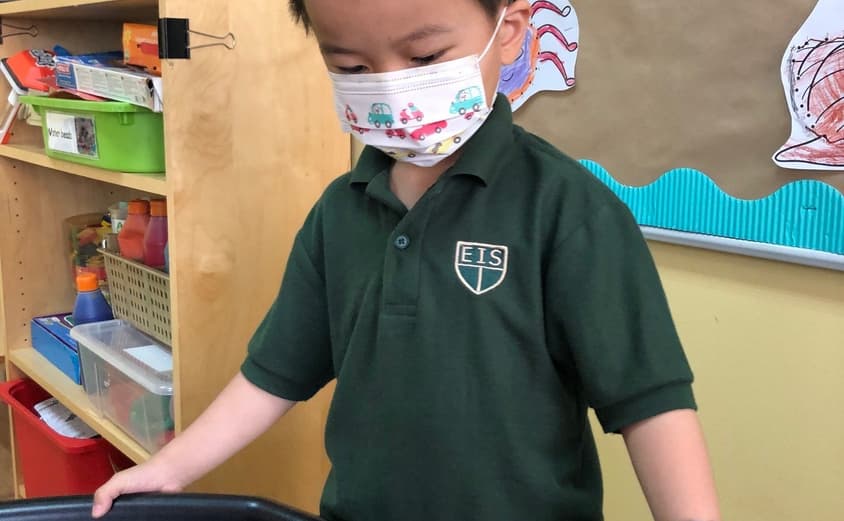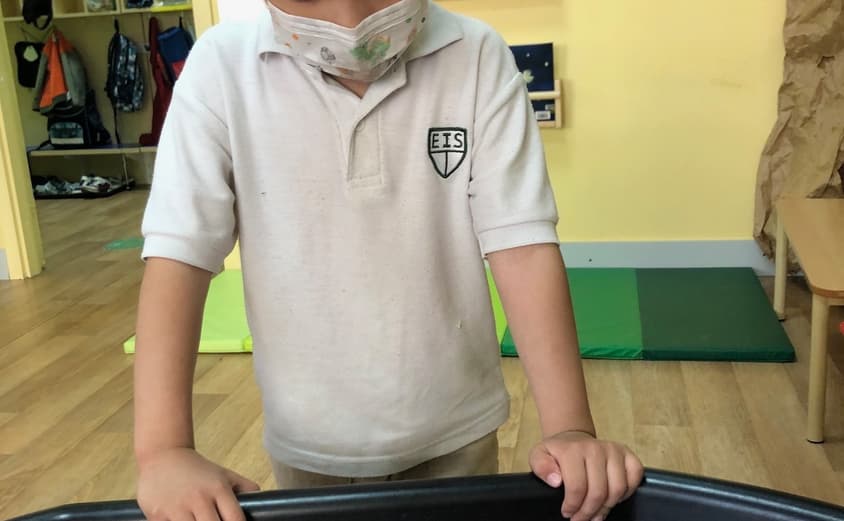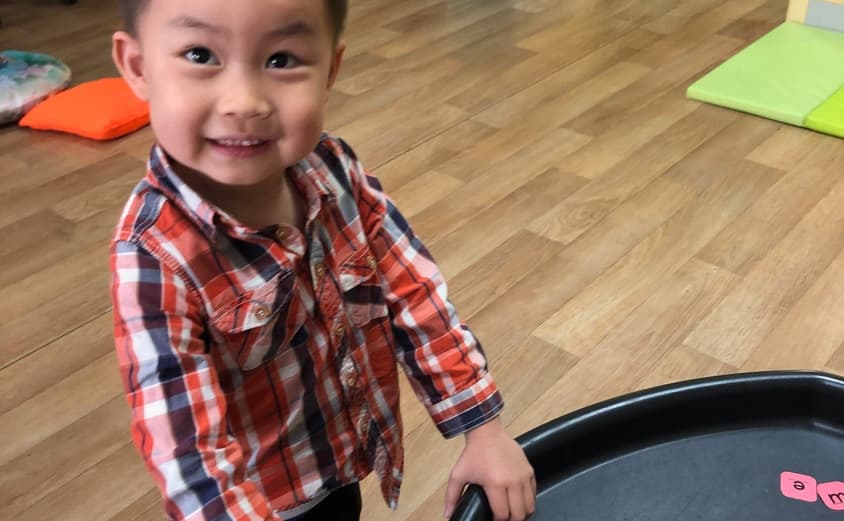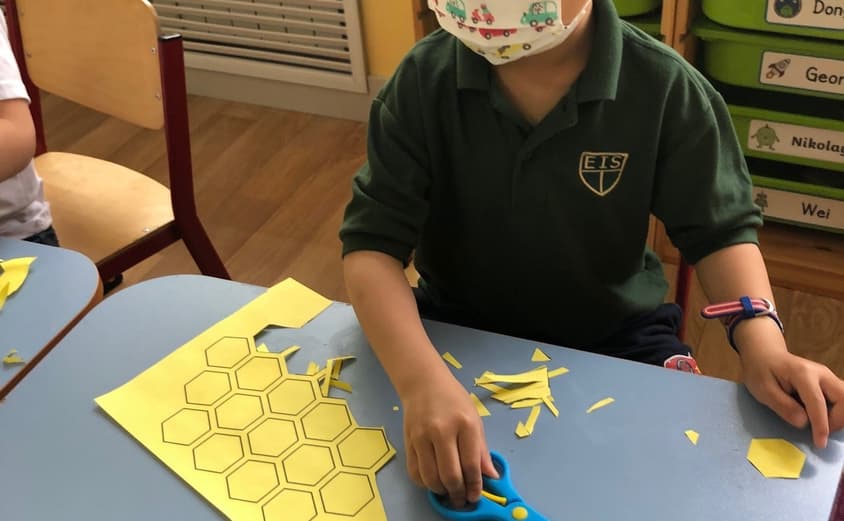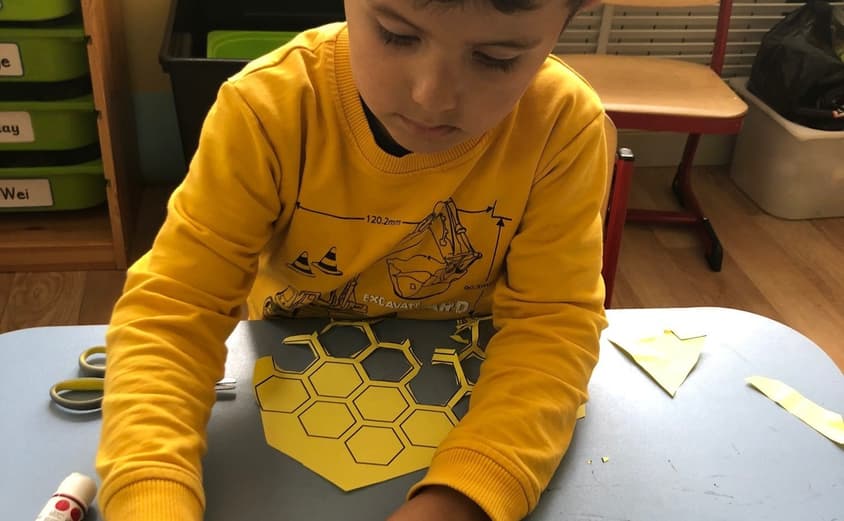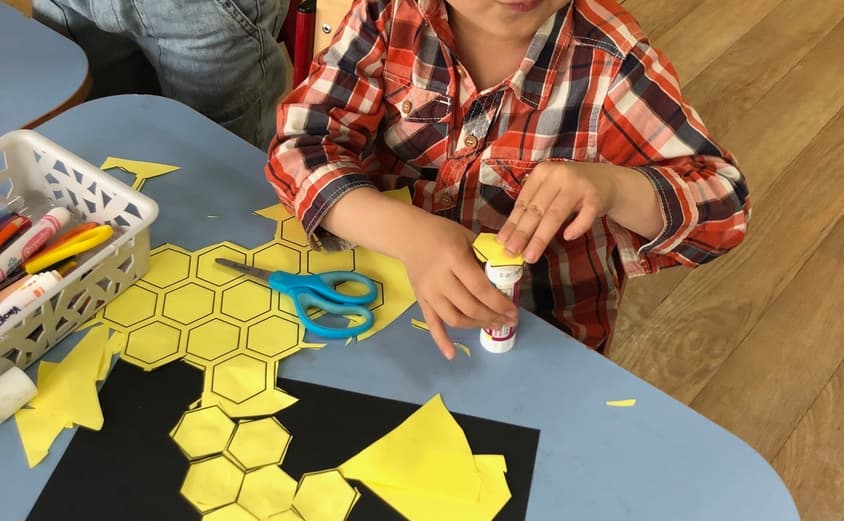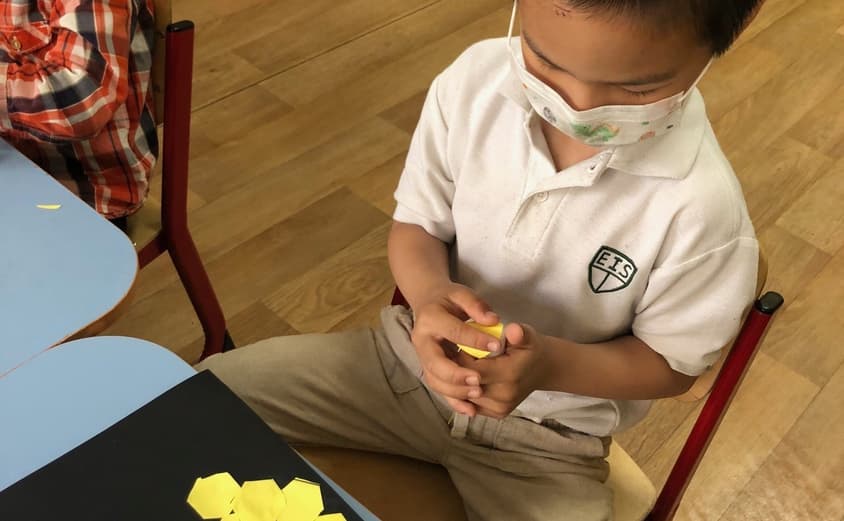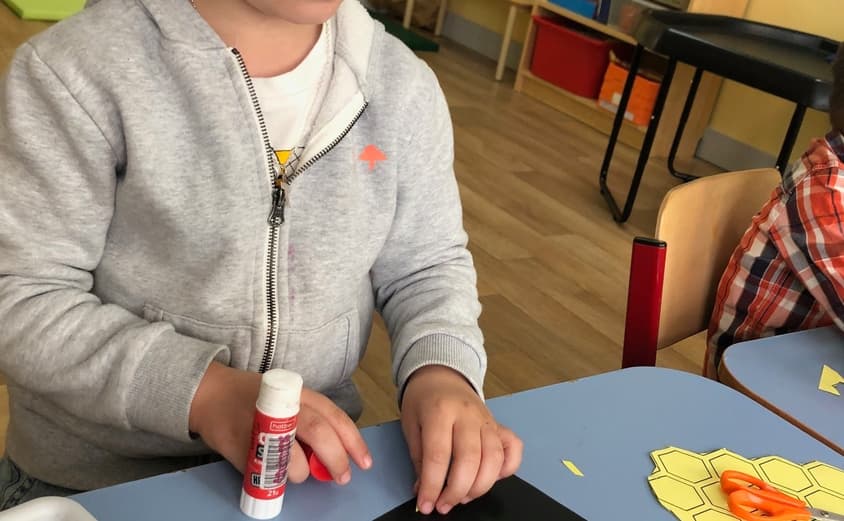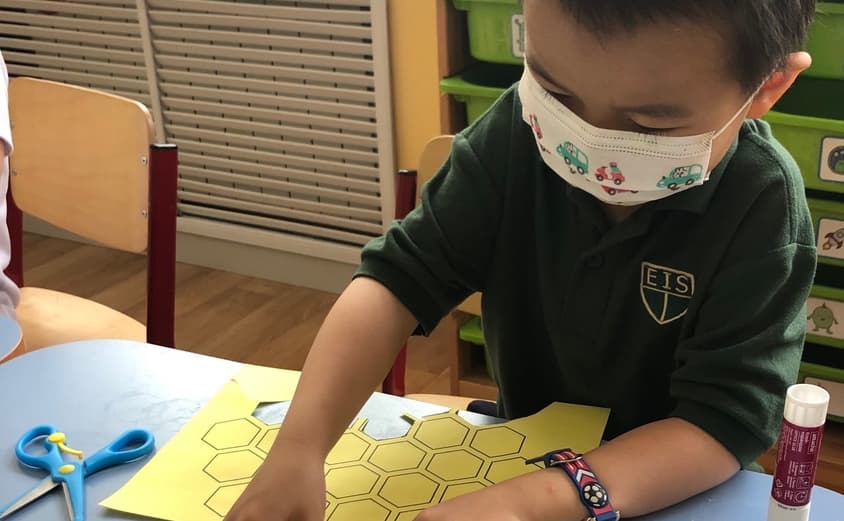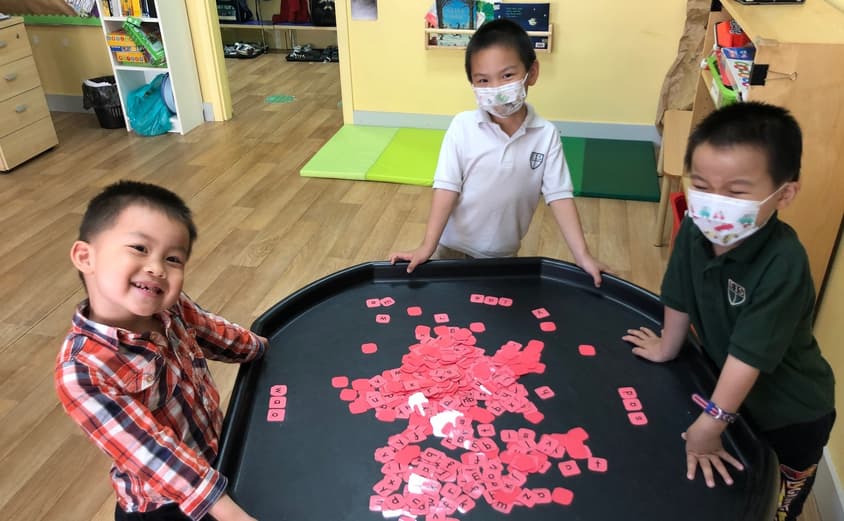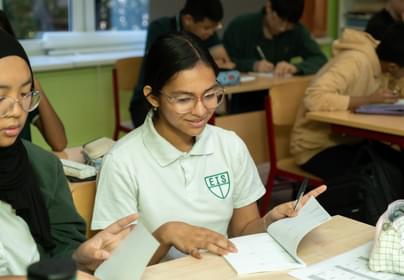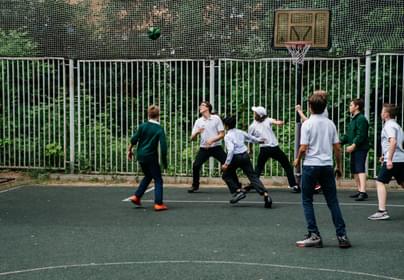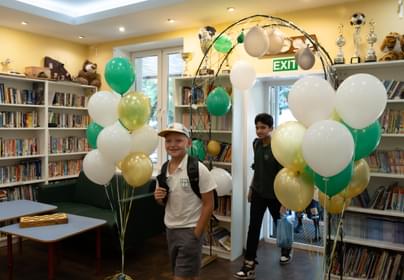NURSERY
We all depend on the survival of bees.
World Bee Day is on the 20th May every year - the perfect excuse to spend time learning about these fascinating and essential insects. Bees are the workers of the animal kingdom. Many plants are pollinated by them and many animals rely on these plants for food.
Bee numbers are in decline and we need to work hard to conserve these interesting and vital creatures.
Nursery learned many wonderful facts about bees this week as we celebrated World Bee Day on the 20th May. We incorporated “World Bee Day” into our theme of ‘Creatures Great and Small’
There are three types of bees:
· the queen, who rules the hive and lays the eggs
· smaller female worker bees who make the honey
· male drones.
Did you know that only female bees have a sting?
Fun fact: In hot weather bees hover above the nest and beat their wings to circulate air and keep the hive cool, working like a ceiling fan!
In Maths we learned about tessellating shapes. We learned that a beehive is made from the hexagon shape. We had fun acting like little bees making our own bee hives by tessellating the hexagon shapes together. We added a finishing touch to our hive with a cute little bee crafted from pipe cleaners.
We played an exciting Maths game that was enjoyed by all where we had to try and find the bee hidden behind a numbered hive.
The children became familiar with the process involved in making honey.
· To produce 450g of honey, bees have to fly about 88,500 km! A foraging honey bee may visit up to 100 flowers per trip.
· Honey bees have to work very hard. Each honey bee will produce only about 0.5g (one twelfth of a teaspoon) of honey before it dies! Imagine how much work went into the teaspoon of honey you put on your toast in the morning!
· Bees collect sweet nectar from flowers, usually travelling less than 6km around their hive. The nectar is combined with an enzyme in the bee's mouth. When the bee returns to the hive, the nectar is passed from bee to bee, further mixing with more enzyme, until it becomes "honey" and is dropped into the wax cells of the honeycomb.
· The mixture is a bit liquid, so the bees flap their wings over it to reduce the water content. When it is ready, the bees cap the cells with more wax.
We ended the day by tasting some lovely honey prepared for us by these wonderful creatures. We all agreed honey is very yummy and we need to all be proactive in saving our world’s bees.








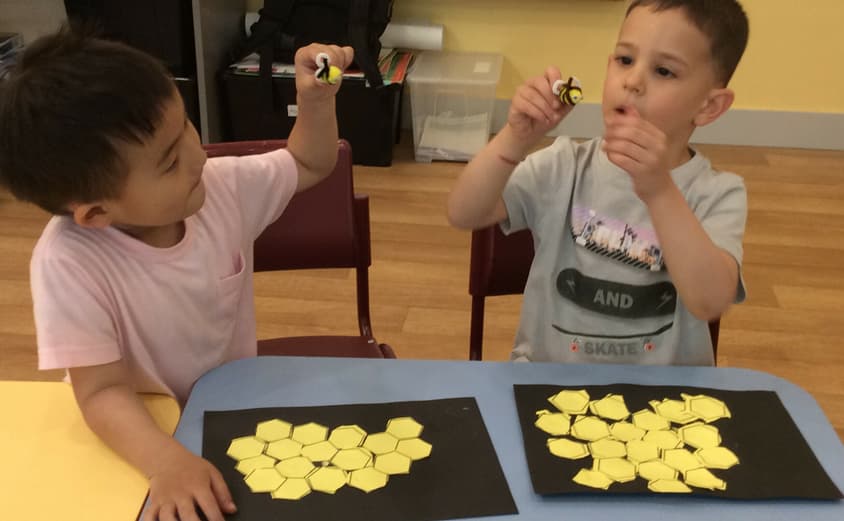




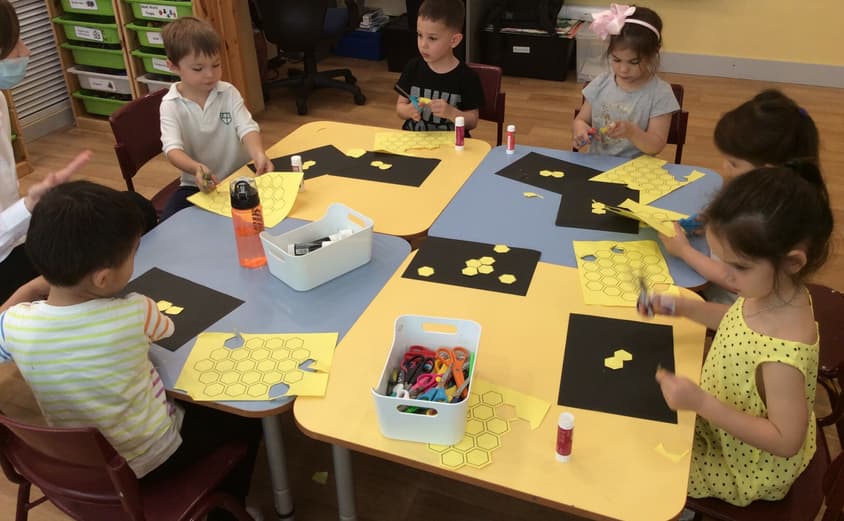
RECEPTION
We have had such a busy week! We started our Minibeasts theme and our activities were centered around the theme. We had a spy and count insect game, colour by numbers minbeasts, join the dots minibeasts that we coloured and cut out.
Thursday was World Bee Day. We discovered fascinating facts about bees, the 3 types of bees, how honey was made and we tasted some honey. We made our own bee hives by cutting out and placing (tesselating) hexagons. We played a find the bee game recognising and naming numbers up to 24 on beehives.
Our sight word knowledge is improving rapidly. We have had such fun playing games in phonics lessons and are starting to blend words and decode them.
